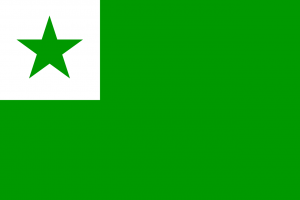Language/Esperanto/Grammar/Adjectives
Hi Esperanto learners! 😊
In today's lesson, we will be discussing adjectives in the Esperanto language. Adjectives are words that describe or modify nouns and pronouns. They can be used to express a variety of meanings, such as size, shape, color, origin, material, purpose, and more.
Adjective Formation
Adjectives in Esperanto are formed by adding the suffix -a to the root word. For example, the root word for "big" is grand- and the adjective form is granda. Similarly, the root word for "small" is mal- and the adjective form is mala.
Adjective Endings
Adjectives in Esperanto have two different endings: -a and -aj. The -a ending is used when the adjective is describing a single noun, while the -aj ending is used when the adjective is describing multiple nouns. For example, if you wanted to say "the big house", you would use the -a ending (la granda domo). If you wanted to say "the big houses", you would use the -aj ending (la grandaj domoj).
Adjective Agreement
Adjectives in Esperanto must agree with the noun they are describing in both gender and number. This means that the adjective must match the gender and number of the noun it is describing. For example, if you wanted to say "the big girl", you would use the feminine form of the adjective (la granda knabino). If you wanted to say "the big girls", you would use the plural form of the adjective (la grandaj knabinoj).
Adjective Placement
Adjectives in Esperanto usually come after the noun they are describing. For example, if you wanted to say "the big house", you would say "la domo granda". However, there are some exceptions to this rule. For example, if you wanted to say "the beautiful girl", you would say "la bela knabino".
Adjective Comparison
Adjectives in Esperanto can also be compared using the suffixes -ej- and -eg-. The -ej- suffix is used to compare two things, while the -eg- suffix is used to compare three or more things. For example, if you wanted to say "the bigger house", you would use the -ej- suffix (la pli grandeja domo). If you wanted to say "the biggest house", you would use the -eg- suffix (la plej grandega domo).
Conclusion
In conclusion, adjectives in Esperanto are formed by adding the suffix -a to the root word. They have two different endings (-a and -aj) and must agree with the noun they are describing in both gender and number. Adjectives usually come after the noun they are describing, but there are some exceptions. Finally, adjectives can be compared using the suffixes -ej- and -eg-.
If you have any questions, please ask them in the comments section below.
Feel free to edit this wiki page if you think it can be improved. 😎

